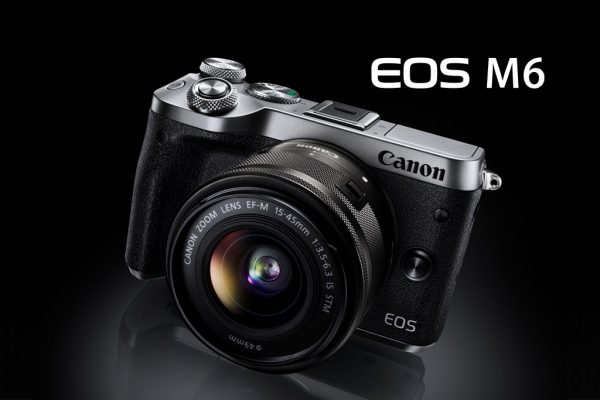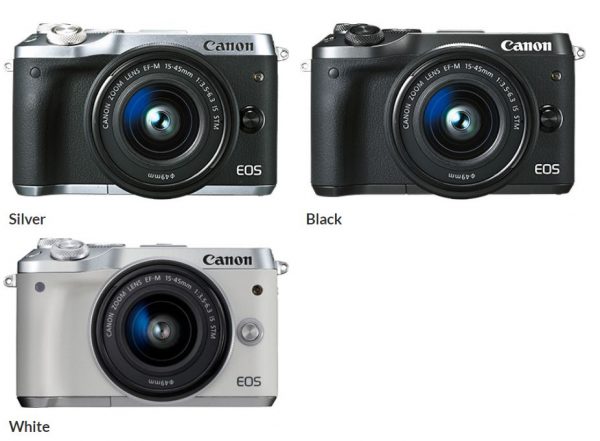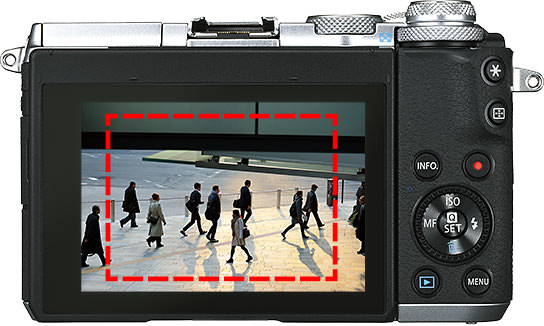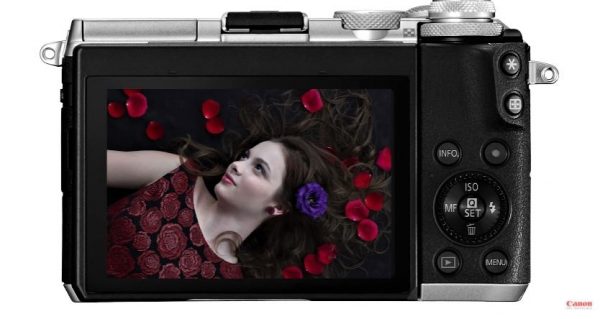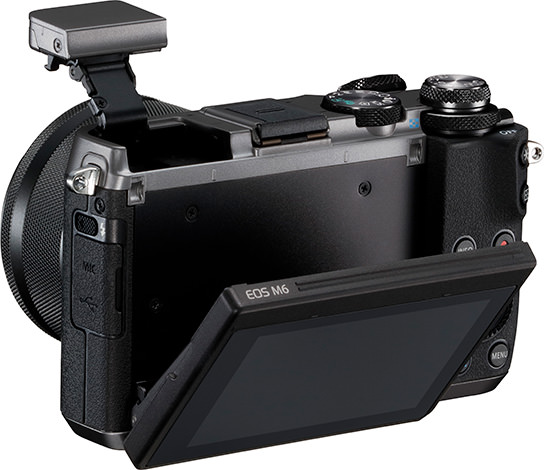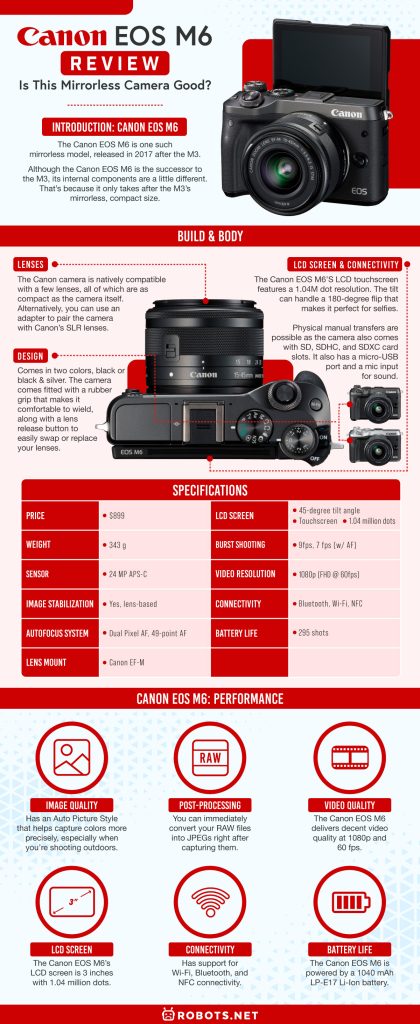While modern smartphone cameras are powerful with impressive photo and video quality for everyday users, they don’t give you the same control or depth that a dedicated camera has. Canon EOS M6 is one such camera, and we will be reviewing it in this article. Does it have good quality for the price? Is it unwieldy or is it easy to use? Here’s everything you need to know about this camera’s design, features, and performance.
Introduction: Canon EOS M6
Canon cameras were once fitted with viewfinders. But as the trend for mirrorless cameras became increasingly prominent, Canon has started to make the switch. The Canon EOS M6 is one such mirrorless model, released in 2017 after the M3. Although the Canon EOS M6 is the successor to the M3, its internal components are a little different. That’s because it only takes after the M3’s mirrorless, compact size. Under the hood, you get a lot of the features from the bigger EOS M5 with the viewfinder removed. Essentially, the Canon EOS M6 sits somewhere in the middle of both cameras in Canon’s M lineup. To summarize the Canon EOS M6, it’s a small, 24MP mirrorless camera with twin-dials. Like the M5, the Canon EOS M6 sports a 24MP APS-C sensor, Dual Pixel AF, and FHD video. It has a touchscreen interface and has a mid-range price tag of $779. If you want to include a lens, Canon bundles the Canon EOS M6 with two specific lenses. The 15-45mm lens bundle costs $899, and the 18-150mm lens bundle will fetch a $1,279 price tag. Check Price on Unique Photo
Build & Body
To start this review, we’ll tackle the build and design of the Canon EOS M6 body. Like most mirrorless cameras, the Canon EOS M6 is small and compact. The camera weighs roughly 13.8 ounces and measures 2.7 x 4.4 x 1.8 inches. These dimensions and overall weight make it easy to carry around.
Lenses
The Canon camera is natively compatible with a few lenses, all of which are as compact as the camera itself. There aren’t that many to choose from, however, so you’ll have to make do with what is available. Alternatively, you can use an adapter to pair the camera with Canon’s SLR lenses.
Design
Moving on to the design, the EOS M6 comes in two colors, black or black & silver. The camera comes fitted with a rubber grip that makes it comfortable to wield, along with a lens release button to easily swap or replace your lenses. On top of the camera, you’ll find the pop-up flash, hot shoe, and dials for the Mode and EV functions. You’ll also find the M-Fn button and the power button around the top of the camera. On the back, you have a control wheel to adjust flash, ISO, delete photos, etc. Furthermore, the back also houses the tilting 3-inch LCD and multiple control buttons.
LCD Screen & Connectivity
The Canon EOS M6’S LCD touchscreen features a 1.04M dot resolution. The tilt can handle a 180-degree flip that makes it perfect for selfies. You can then connect your phone to the camera via Wi-Fi to seamlessly transfer the selfies without using external storage. Physical manual transfers are possible as the camera also comes with SD, SDHC, and SDXC card slots. It also has a micro-USB port and a mic input for sound. The only thing lacking is the EVF that the M5 has, but you can get an external accessory as a substitute.
Specifications
Here are the main features of the Canon EOS M6:
1.04 million dots
Canon EOS M6: Performance
It’s finally time to review the performance of the Canon EOS M6. It might not be an SLR, but it can still compete with SLRs performance-wise. Here’s a run-down of the Canon EOS M6 and how it performs in real-life applications: The Canon EOS M6 is snappy the moment you press the power button. It boots up right away, identifying the scene quickly with a pre-selected AF point. However, it does take a short while if it’s on an automated default option. Otherwise, it’s perfect for when you need to photograph something that may quickly disappear. Memory-wise, the Canon EOS M6 performs pretty well as long as you have a fast memory card. The camera can handle 18 RAW + JPEG frames at once without becoming sluggish. If you only snap JPEG photos, that number increases to 28 frames. When it comes to general navigation, the camera also doesn’t lag during normal use. You’ll find that even zooming into scenes has zero lag when trying to get close-up shots. It’s even snappier when you forego the touchscreen and use the physical dials to control the camera. The touchscreen can be used to control the camera as well, but you may find the onscreen buttons too small to press. Moreover, multiple touch controls are unusable when you flip the LCD face-front. If you think the Canon EOS M6 is a downgrade compared to the larger M5, you’d be wrong. That’s because it uses the same sensor as the M5: the 24.2 MP CMOS APS-C. This sensor is capable of capturing high-quality, high-resolution photos. The sensor also makes it easy to use full-time autofocus with phase detection. All this just means that the Canon EOS M6 can refocus on the subject whenever it needs to. When it comes to Picture Styles, the Canon EOS M6 offers decent colors by default. The Standard style does have the tendency to make colors look a little dull compared to reality. Thankfully, the camera has an Auto Picture Style that helps capture colors more precisely, especially when you’re shooting outdoors. The Canon EOS M6 boasts an accurate white balance from the start. The only time the default white balance will become less accurate is when there is incandescent lighting present. By default, the Canon EOS M6 can handle both well-balanced and difficult lighting situations. This is complemented by its different metering options, such as evaluative, spot, center-weighted, and partial. Apart from this, we recommend keeping the Peripheral Illumination correction setting turned on. This allows the camera to lighten dark spots around the frame. If you’re shooting high-contrast shots, give the auto lighting optimizer a try to take better-looking photos. If you prefer low-light photography, the camera performs excellently on that front too. Apart from the above, the Canon EOS M6 can take burst shots at 9 fps. This number drops to 7 fps if you use continuous autofocus. With the Canon EOS M6, you can immediately convert your RAW files into JPEGs right after capturing them. You can also crop, resize, and change the aspect ratio with the touchscreen. While the Canon EOS M6 doesn’t support 4K video recording, it still delivers decent video quality at 1080p and 60 fps. The resultant video output is sharp, has a good dynamic range, and is accurate using the camera’s AF system paired with the touchscreen. You can also record audio by attaching an external microphone to the mic input. Apart from basic videos, you can also shoot time-lapse videos with 300 timed shots on the camera. By default, it shoots time-lapse videos at three-second intervals, but you can always adjust this in the settings. Moreover, the LCD screen flips all the way around, making it the perfect tool for vloggers. You can use the fully front-faced screen to monitor your video as you walk or go about your vlog. To combat shaky hands, the Canon EOS M6 sports electronic video stabilization for moving shots. This function does have its limitations, however, as it only works when you lower your resolution to below 1080p. The Canon EOS M6’s LCD screen is 3 inches with 1.04 million dots, accurately reflecting the resolution and colors of the photos you capture. The screen also has a tilting feature that allows it to tilt up to 45 degrees. This means that you can use the camera in multiple orientations without having to bend your neck. It can also face the front so that you can see what you’re doing while taking selfies. Although the Canon EOS M6 is a mirrorless camera, there’s still the option to add a viewfinder. All you need is to find a compatible External Viewfinder (EVF). There are two that you can attach to the hot shoe: the EVF-DC1 or EVF-DC2. Your camera wouldn’t be complete without proper connectivity options available. The Canon EOS M6 does well on this front, as it has support for Wi-Fi, Bluetooth, and NFC connectivity. The camera also saves files using the UHS-I standard on SD, SDHC, or SDXC cards. The Canon EOS M6 is powered by a 1040 mAh LP-E17 Li-Ion battery. While that might not sound impressive if you’re used to smartphones, it’s more than enough for a mirrorless camera. It can last you through the day even if you’re using the camera heavily. For reference, the M5 and M3 use the same battery and each one lasts pretty long. Users have reported that their cameras last around two to three days before dropping to 10%. Hence, you can easily take 295 individual photos before the Canon EOS M6 loses power. You can also push this limit to 425 frames if you enable the Eco mode. However, we still recommend you purchase a spare battery in case you have long shoots with no access to a power outlet.
Summary & Conclusion
If you want better-than-smartphone quality without going full-on SLR, the Canon EOS M6 is a decent choice. It’s compact and lightweight so you can take it around wherever you want to take photos or shoot videos. The powerful and responsive performance makes it ideal for fast-paced environments. Its versatile controls and LCD screen also make it great for different use cases. Moreover, the top-notch AF system allows you to shoot photos and videos without much worry. Unfortunately, the price is what makes this camera slightly difficult to recommend. It has no 4K video, electronic shutter, or a built-in viewfinder at $899. You can find better alternatives with more features at this price point. However, it’s a pretty decent mirrorless camera to consider if you can find it at a decent discount.
